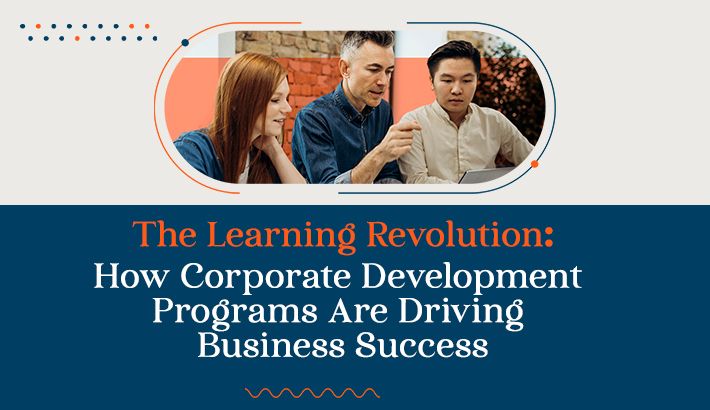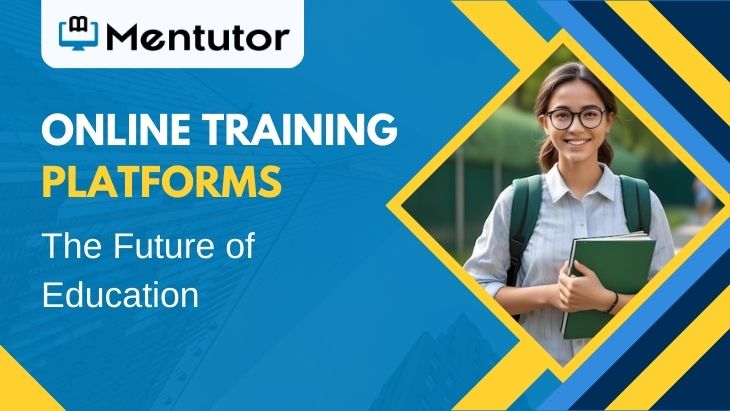To achieve success in the current dynamic business environment, it is vital to consistently stay ahead of the competition. The key to sustainable growth lies in fostering continuous learning and development within an organization. This is where corporate development programs come into play. Designed to equip employees with the knowledge and skills needed to adapt and thrive in a rapidly changing environment, these programs have become the cornerstone of business success.
With the right corporate development program, companies can cultivate a culture of learning that drives innovation, enhances productivity, and boosts employee engagement. Employees who feel supported and empowered through ongoing training are more likely to be motivated, satisfied, and committed to their organization's goals. As a result, businesses experience improved performance, higher retention rates, and a competitive edge in today's talent-driven marketplace.
In this article, we will explore the learning revolution that is transforming the way companies approach employee mentorship and learning program. From the integration of technology to personalized learning experiences, we will delve into the strategies and best practices that are driving business success in the corporate world. Join us as we uncover the power of corporate development programs in shaping the future of work.
The Significance of Continuous Learning in the Corporate Sphere
Continuous learning is no longer a luxury but a necessity in the corporate world. With advancements in technology and the increasing pace of change, employees need to continually update their skills to stay relevant. Companies that prioritize continuous learning and development create a culture of growth and innovation, enabling their workforce to tackle new challenges head-on.
Corporate development programs provide employees with the opportunity to expand their knowledge and enhance their skills. Whether through workshops, online courses, or mentorship programs, these initiatives offer a structured approach to learning that goes beyond day-to-day tasks. By investing in their employees' development, organizations demonstrate their commitment to their workforce's growth, leading to increased job satisfaction and loyalty.
The Benefits of Corporate Development Programs
The benefits of corporate development programs extend beyond individual growth; they also have a significant impact on the organization as a whole. Employees who participate in these programs are more engaged, motivated, and productive. They bring new ideas and perspectives to the table, contributing to a culture of innovation and continuous improvement.
Moreover, corporate development programs help organizations attract and retain top talent. In today's competitive job market, employees seek companies that invest in their professional development. By offering robust learning opportunities, organizations can differentiate themselves and become an employer of choice.
Trends in Corporate Learning and Development
As the business landscape continues to evolve, so do corporate learning and development practices. Companies are adopting new strategies and technologies to deliver effective and engaging learning experiences. One notable trend is the shift towards personalized learning.
Personalized learning recognizes that individuals have different learning styles, preferences, and goals. By tailoring learning experiences to individuals' needs, organizations can maximize the impact of their development programs. This can be achieved through adaptive learning platforms, virtual reality simulations, or personalized coaching sessions.
Another trend is the integration of social learning into corporate development programs. Social learning leverages the power of collaboration and peer-to-peer knowledge sharing. By encouraging employees to learn from each other, organizations create a sense of community and foster a culture of continuous learning.
Designing Effective Corporate Development Programs
Designing an effective corporate development program requires careful planning and consideration. The first step is to identify the organization's learning needs and goals. This can be done through conducting a thorough training needs analysis and consulting with key stakeholders.
Once the learning needs are identified, the next step is to determine the most suitable learning methods and formats. This could include a mix of in-person training, e-learning modules, on-the-job training, or external workshops. It is important to provide a variety of learning options to accommodate different learning preferences and schedules.
Additionally, incorporating opportunities for practice and feedback is crucial for effective learning. This can be achieved through simulations, case studies, or role-playing exercises. By providing a safe environment for employees to apply their newly acquired skills, organizations can ensure the transfer of learning to the workplace.
Implementing a Corporate Development Program
Implementing a corporate development program requires strong leadership and effective communication. It is essential to gain buy-in from senior management and ensure their active participation in the program. This sends a clear message to employees that learning, and development are top priorities.
Communication is key throughout the implementation process. Employees need to understand the purpose of the program, what they can expect, and how it aligns with the organization's goals. Regular updates, town hall meetings, and internal marketing campaigns can help create excitement and engagement around the program.
Moreover, providing ongoing support and resources is crucial for program success. This includes assigning mentors or coaches, providing access to learning materials, and creating opportunities for continuous learning beyond the program's duration. By fostering a supportive learning environment, organizations can maximize the impact of their development initiatives.
Measuring the Impact of Corporate Development Programs
To ensure the effectiveness of corporate development programs, it is important to measure their impact. This can be done through a combination of quantitative and qualitative methods. Quantitative measures may include tracking key performance indicators (KPIs), such as employee retention rates, productivity levels, or customer satisfaction scores.
Technology and Innovation in Corporate Learning
Technology is revolutionizing corporate learning and development. Organizations are leveraging digital tools and platforms to deliver engaging and interactive learning experiences. E-learning modules, virtual classrooms, and gamification are just a few examples of how technology is being used to enhance learning outcomes.
Moreover, data analytics and artificial intelligence are being utilized to personalize learning experiences and provide actionable insights. By analyzing learners' behaviors and performance, organizations can tailor content and interventions to meet individuals' specific needs.
The integration of technology also enables organizations to provide learning opportunities beyond traditional boundaries. Remote employees, for example, can access training programs regardless of their physical location. New possibilities for global collaboration and knowledge sharing emerge from this development.
Qualitative measures, on the other hand, focus on gathering feedback from participants. This can be done through surveys, focus groups, or interviews. By collecting feedback on the program's strengths and areas for improvement, organizations can continuously enhance their development initiatives.
Overcoming Challenges in Corporate Development Programs
While corporate development programs offer numerous benefits, they are not without challenges. One common challenge is resistance to change. Employees may be hesitant to embrace new learning methods or perceive training as a disruption to their daily work. To overcome this challenge, organizations need to communicate the value of learning and address any concerns or misconceptions.
Another challenge is ensuring the transfer of learning to the workplace. Employees may struggle to apply their newly acquired skills in real-life situations. To address this, organizations can provide job aids, ongoing support, and opportunities for practice and reinforcement. Additionally, managers play a critical role in supporting employee learning and development journey and providing feedback and guidance.
Conclusion: Harnessing the Power of Corporate Development Programs for Business Growth
Corporate development programs are transforming the way companies approach employee development. By fostering a culture of continuous learning, organizations can drive innovation, enhance productivity, and boost employee engagement. The benefits extend beyond individual growth to organizational success, as companies that invest in their employees' development gain a competitive edge in the talent-driven marketplace.
Through personalized learning experiences, leveraging technology, and overcoming challenges, organizations can harness the power of corporate development programs for business growth. By prioritizing continuous learning and development, companies can shape the future of work and ensure their long-term success in an ever-changing business landscape.
In conclusion, the learning revolution is here, and organizations that embrace it will thrive in the new era of work. Are you ready to join the revolution? Start by investing in your employees' development and watch your business soar to new heights.






Leave a reply